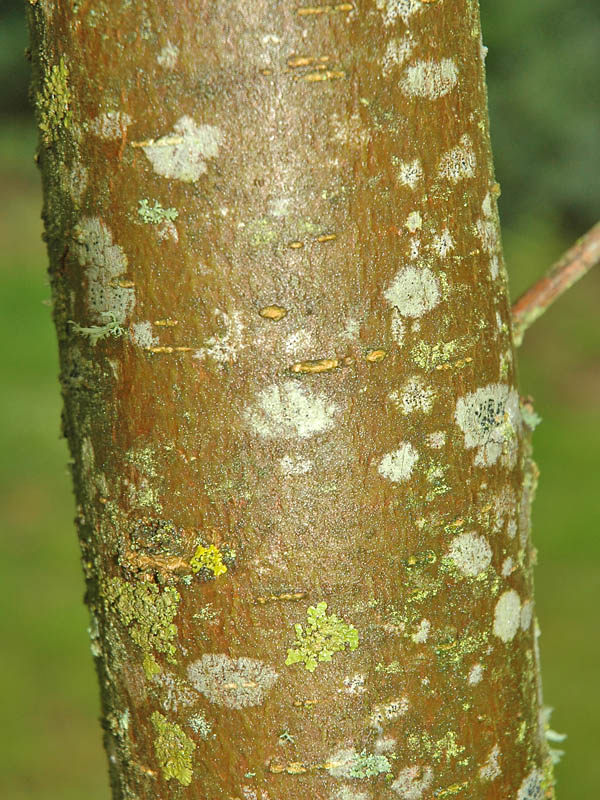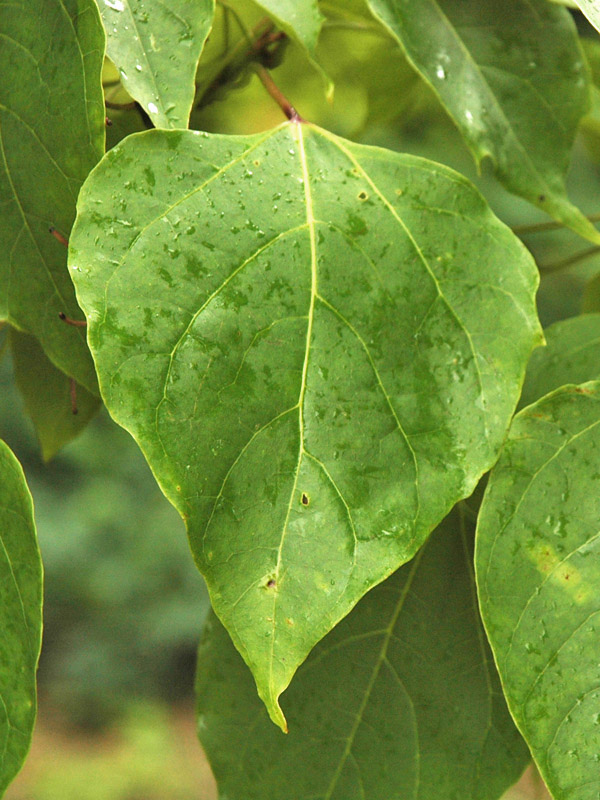
Woody > Catalpa > Catalpa bungei > Catalpa bungei
Catalpa bungei
Manchurian Catalpa
Origin: Northern China.
Mike's
Opinion


"
A beautiful tree which produces fragrant pink or white flowers during the summer. When flowering is over the fruit of the tree emerges as long bean-like pods. These pods are 30-50 cm in length and hang in clusters from the branches.
Michael Pascoe, NDP., ODH., CLT., MSc. (Plant Conservation)
"
| Family |
| Bignoniaceae |
| Genus |
| Catalpa |
| Species |
| bungei |
| Category |
| Woody |
| Type |
| Tree (deciduous) |
| Pronunciation |
| USDA Hardiness Zone |
| 5 - 8 |
| Canadian Hardiness Zone |
| 5 |
| RHS Hardiness Zone |
| H7 |
| Temperature (°C) |
| -30 |
| Temperature (°F) |
| -20 |
| Height |
| 7 - 10 m |
| Spread |
| 6 - 9 m |
Photographs
Description and Growing Information
Flowering Period
| General Description |
| Small, bushy, pyramidal to rounded tree with upright straight branches and large leaves. |
| Landscape |
| As a landscape tree it provides shade and ornament in, while its wood is highly valued in its native range. |
| Cultivation |
| Plant in full sun to partial shade in moist, fertile, hilly areas where the soil drains easily and has a pH of 5.5-7.5. |
| Shape |
| Pyramidal to round headed, with upright branches. Over time the plant develops into a bushy tree with dense foliage. |
| Growth |
| Medium |
| ID Characteristic |
| Deep lined bark that can appear to be cracking. Delicate pale pink to white flowers arranged on a corymb of 3-12 florets. Long pod fruit. Large glabrous green leaves. |
| Pests |
| Catalpa sphinx moth, mealy bugs, catalpa midge, powdery mildew, leaf spot and Manchurian catalpa shoot borer may be problematic. |
| Bark/Stem Description |
| The greyish-brown bark can be smooth to deeply fissured as the tree matures. |
| Flower/Leaf Bud Description |
| Small reddish brown buds. |
| Leaf Description |
| Opposite, glabrous, shiny, dark green, large green heart shaped leaves, 5-18 cm in length and 4 -11 cm wide. The petiole is 2-8 cm in length. |
| Flower Description |
| The 2.5-4 cm flowers are rose-pink to white in colour with purple and yellow markings on the inside. They are borne in a 3-12 flowered corymb and are hermaphrodites. |
| Fruit Description |
| Capsular pod-like fruits are 30-50 cm long, green maturing to brown. The pods hang in clusters and drop to the ground in October. |
| Colour Description |
| The leaves are green turning darker and brownish during the winter. The fruit green turning to brown later before dropping in October. The bark, is medium brown while the flowers are rose-pink to white. |
| Texture Description |
| A medium textured tree in leaf but coarse in winter. |
| Notable Specimens |
| Arnold Arboretum, Boston, Massachusetts, United States of America. Brooklyn Botanic Garden, Brooklyn, New York, United States of America. James Pass Arboretum, Syracuse, New York, United States of America. |
| Propagation |
| Seeds that been harvested and stored should be stratified for 3 weeks at a temperature of 1°C. When the seedlings reach a size that can be handled they can be transplanted to individual pots and grown on in a cold frame for their first winter. They may then be planted in their final location during late spring to early summer after the last frost. Softwood cuttings should be about 10 cm long and taken in late spring to early summer before the leaves are fully developed. They should be rooted under bottom heat and mist. Root cuttings should be taken in winter when trees are dormant. Placed in flats and kept warm and moist until new shoots appear. Treat as above when the plants are well rooted and established in the flats. |
| Ethnobotanical Uses (Disclaimer) |
| The bark, stem and leaves are used for medicinal purposes. Lotions and poultices are produced and are used in the treatment of cancer. Cultivated as an ornamental tree but in China it is also grown for wood. |
References
Dirr, M. A. (Revised 2009). Manual of Woody Landscape Plants - Sixth Edition. In M. A. Dirr, Manual of Woody Landscape Plants (p. 221). Champaign Illinois: Stipes Publishing L.L.C.


